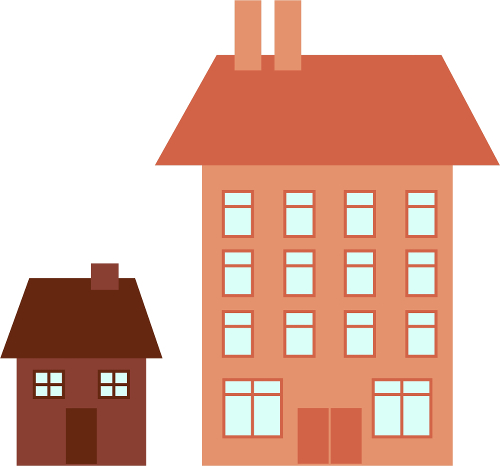For a growing segment of the population, big houses filled to the brim with pricey possessions are sounding significantly less appealing than what’s on the other end of the spectrum – embracing a life of minimalism and moving into a space too small to allow the buildup of stuff.
These tiny homes that look like they’ve been plucked right out of a child’s fairy tale are becoming the main residence for individuals, couples, and families alike.
But while moving into a home only a few hundred square feet in size might sound like a great way to save money and return to a simpler life, securing financing for such a non-traditional dwelling might not be so simple.
Banks don’t consider it a home.
Even if you plan to treat your tiny home as a primary residence, that doesn’t mean banks will offer you the same type of financing. If your home will be on wheels, it doesn’t meet the minimum square foot requirement (usually around 600 square feet), or it doesn’t meet the minimum price requirements some lending institutions stick to, you could be out of luck as far as landing a traditional mortgage.
It doesn’t provide enough collateral to make it worth financing.
Think about this: according to the Census Bureau, the average price of a new home sold in the United States in December 2015 was $346,400. On the flip side, the average cost to build a tiny home sits around $23,000. If the owner of the new, traditional home defaults, the bank has a much larger piece of collateral than if the owner of the tiny home defaults.
Lenders won’t make enough off of your purchase to make the leg-work worth it.
Just because a home is smaller, doesn’t mean it takes any less work to acquire financing. Wisebread.com offers some insight on this stumbling block:
“Lenders have to go through the same process for a $50,000 mortgage loan as they do for a $400,000 loan,” said Peggy Burke, vice president and mortgage banker with PrivatePlus Mortgage in Atlanta. “The underwriters still have to go through the same steps to approve a borrower. There still needs to be title insurance. They still have to prepare the loan documents. So banks are still incurring the same costs they would for a larger loan.”
So what are your downsizing options?
Home Equity Loan
If your tiny home is a second home and not your primary residence, you can tap into the equity in your home and use this to make your purchase. The size of the loan you can take out is determined by the amount you have paid into your home versus the amount the home is worth.
Tiny house loan
With the tiny house movement gaining momentum, companies like Tiny House Lending are hoping to fill the financing gap that currently exists. For those with good to excellent credit, they will pair you with a lender that can offer up to a $100,000 loan with an 84-month loan term.
Unsecured Loan
While traditional mortgages are secured loans, meaning your home is the collateral should you default, purchasing a tiny home can sometimes be done with an unsecured personal loan. However, because this is considered to be riskier for lenders, your financial situation – income, credit history, debt – might be looked at and considered more carefully.
RV Loan
According to Bankrate.com, you could qualify for an RV loan if your home is on a mobile platform and is certified by the Recreational Vehicle Industry Association. While these loans have more stringent financial requirements than auto loans, the interest rates are comparable.
Keep your eye on the prize
While financing your tiny home might be tricky and building your tiny home might require cutting through some red tape, those who have found themselves living in these microscopic abodes swear there are plenty of benefits to be had – namely paying significantly less to live a comfortable life than the traditional home market would ever allow.
If that sounds appealing to you, keep your eye on the prize – it will all be worth it in the end.

